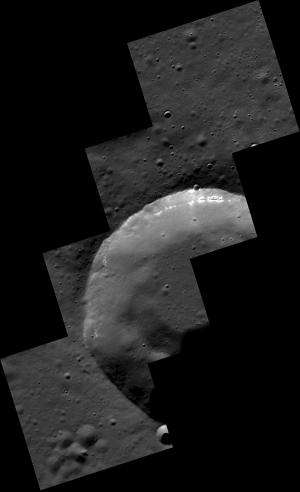MESSENGER Surpasses 200,000 Orbital Images of Mercury

MESSENGER has now returned more than 200,000 images acquired from orbit about Mercury. The 1996 proposal for the mission promised a return of at least 1,000 images says Robert Gold, MESSENGER's Science Payload Manager. "We expected then that we would have some data compression that would probably raise the image total to somewhere near 2,000 images," says Gold, of the Johns Hopkins University Applied Physics Laboratory (APL), but scientists did not imagine then the degree to which MESSENGER would surpass that goal.
"Returning over 200,000 images from orbit about Mercury is an impressive accomplishment for the mission, and one I've been personally counting down for the last few months," says APL's Nancy Chabot, the Instrument Scientist for the Mercury Dual Imaging System (MDIS). "However, I'm really more excited about the many thousands of images that are still in MESSENGER's future, especially those that we plan to acquire at low altitudes and will provide the highest resolution views yet of Mercury's surface."
During MESSENGER's second extended mission, the spacecraft is making a progressively closer approach to Mercury's surface with each successive orbit. In about two months, each closest approach will be at a lower altitude than at any previous point in the mission, enabling the acquisition of unprecedentedly high-spatial-resolution data. For spacecraft altitudes below 350 kilometers, Narrow Angle Camera (NAC) images will be acquired with pixel scales ranging from 20 meters to as little as 2 meters.
To commemorate the milestone, image scientists released this four-image mosaic—one of the first from the MDIS low-altitude imaging campaign—that reveals, among other features, hollows that appear to have formed in one layer in the wall of this 15-kilometer-diameter crater.
The mission marks three additional milestones today: the spacecraft concludes its 12th Mercury year in orbit, its 18th Mercury sidereal day in orbit, and its 6th Mercury solar day in orbit.
"We have come an incredible way since the first mission proposal was submitted to NASA just over 17 years ago," notes MESSENGER Project Scientist Ralph McNutt of APL. "Getting to launch and then to Mercury, flyby by flyby, and into orbital operations were incredible accomplishments—against all sorts of odds—and yet we are now, almost routinely, noting these statistics about the mission that has literally revealed an entirely new world to humanity."
When MESSENGER was launched in August 2004, he continues, "none of the team in their wildest imagination could have foreseen the successes that we now celebrate with new data coming back week by week from the innermost planet. And we are not done. With a little more than a year left to go, before gravity brings the end to operations, we will view the planet and its environment from altitudes lower than were ever envisioned only a few short years ago—and, as with any planetary mission providing closer and closer looks at a planetary neighbor, all we can guess is that we have not wrung all of Mercury's surprises and discoveries just yet."
Provided by NASA





















